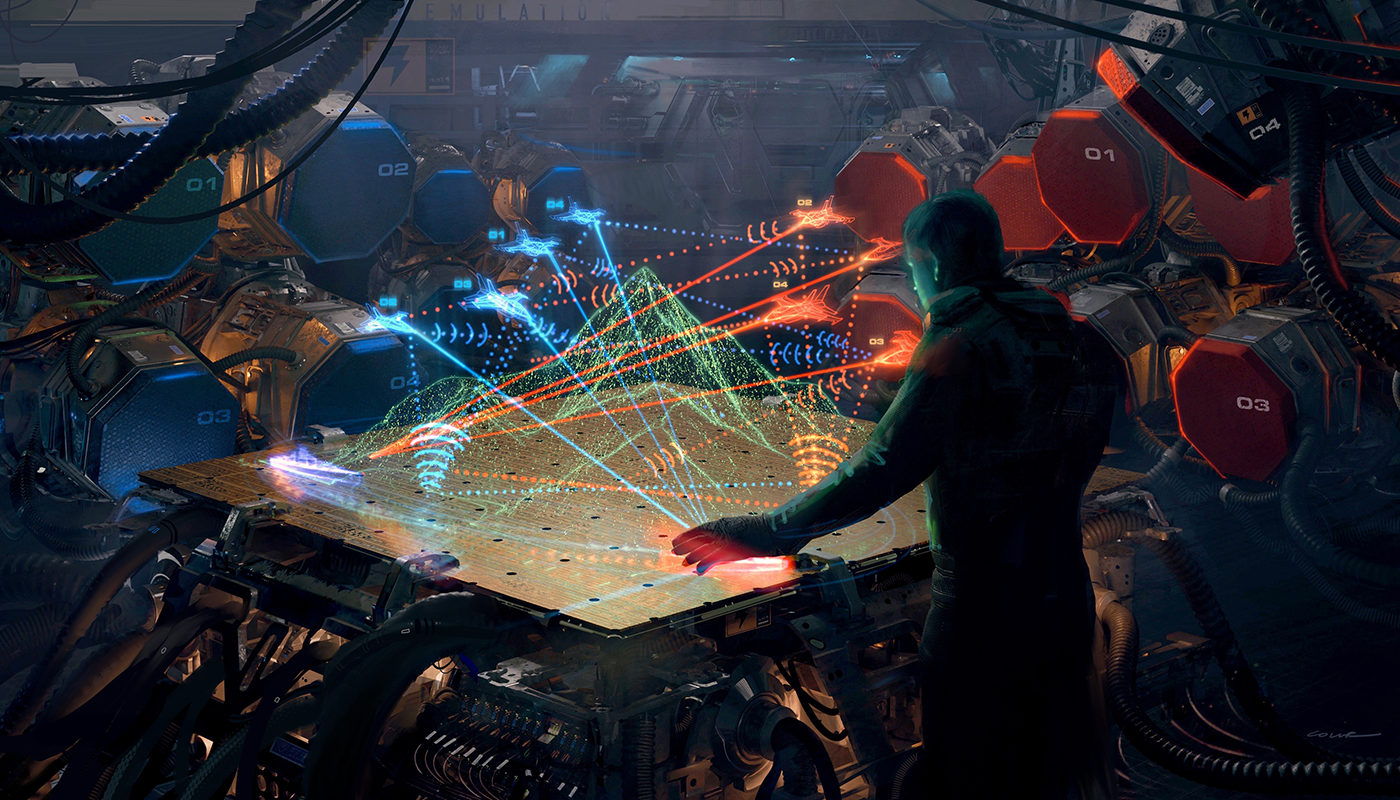Digital RF Battlespace Emulator enables new levels of realism, scale, and complexity

Aug 12, 2025
The U.S. Department of Defense faces an increasingly complex electromagnetic environment, in which rapid advances in radar and electronic warfare (EW) demand new tools for development, testing, and training. DARPA’s Digital RF Battlespace Emulator (DRBE) program took up this challenge, resulting in the world’s largest high-fidelity, real-time virtual radio frequency (RF) test range – enabling previously unachievable scale and realism in the emulation of EW scenarios.
Unlike traditional modeling, simulation, and open-air testing approaches, the DRBE system allows for the complex interaction of synthetic RF entities simultaneously, all within a fully software-defined environment. This offers a powerful new tool for testing AI-enabled EW capabilities and accelerating the development of next-generation RF systems.
“DRBE is a leap forward in how we can prepare and equip RF systems against sophisticated adversaries,” said Anna Tauke-Pedretti, Ph.D., DRBE program manager in DARPA’s Microsystems Technology Office. “DRBE is not only setting a new benchmark for real-time simulation but is also accelerating our ability to develop and refine advanced electronic warfare capabilities that keep pace with emerging threats.”’
At the heart of DRBE is a real-time high-performance wafer-scale computing architecture, or “Real-Time HPC,” powered by the world’s largest processor. This compute system delivers massive throughput with ultra-low latency, a critical requirement for simulating complex RF engagements with the timing precision needed for modern EW tactics.
The first DRBE system will transition to a U.S. Navy lab in late 2025, where it will be integrated into the Department of Defense’s testing and evaluation infrastructure.
"DRBE is a catalyst, redefining the scale at which we can develop EW payloads and address complex challenges. It empowers our lab to craft solutions with unprecedented sophistication, significantly boosting our confidence in the effectiveness and reliability of our products,” said Jenifer Koch, chief technologist, Aircraft and Spectrum Integration Environments, U.S. Navy.
Expanding DRBE’s range
Building on this momentum, DARPA is now seeking to expand DRBE’s architecture to further boost performance and data flow. This next phase of development will integrate cutting-edge optical interconnects into the DRBE system, drastically increasing bandwidth and enabling scalable connections between hundreds of wafer-scale computers.
These enhancements will unlock the potential for even larger-scale RF scenarios, while also opening pathways for DRBE’s architecture to support additional mission domains, including battlespace autonomy, materials science, and digital twins.
“DRBE isn’t just a test tool; it has the potential to be a strategic enabler for next-generation defense technologies,” said Tauke-Pedretti. “By pushing the boundaries of real-time emulation and compute, we’re laying the groundwork for smarter, faster, and more resilient EW systems.”
###
Media with inquiries should contact DARPA Public Affairs.
